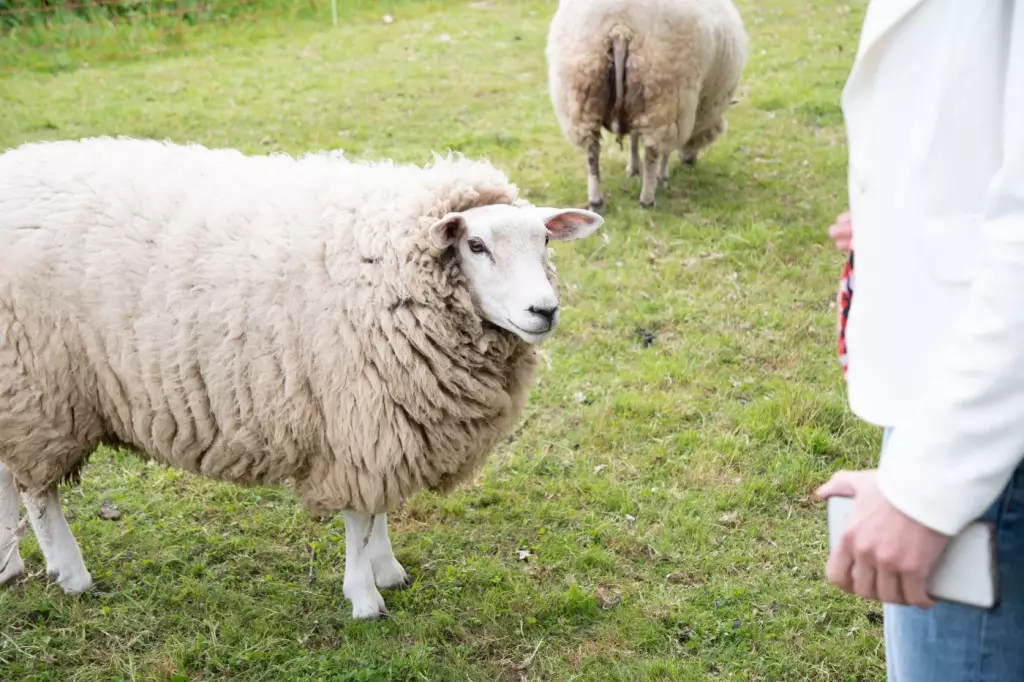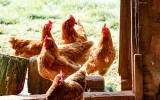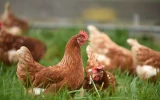Can You Make Money from Sheep Wool & How Much?
Although selling wool won't make you rich, it is a decent side job. If you're considering giving it a shot, here's an article that will help you choose a breed whose fleece is in high demand. The price you can charge for sheep wool will fluctuate depending on the location where the wool is farmed, sheared, and sold. The type and quality of your wool also significantly affect the price. So, how much can you make from sheep wool?
You can make money selling wool from sheep if you're willing to put in a little work. Every year, sheep produce wool at least once. A wool clip averages about seven pounds, and the average price per pound would be $20. Therefore, you can make $140 per pound of clip per year.
Some varieties of wool are typically more expensive than others, sometimes by a significant margin. Raw fleece is substantially less expensive than washed fleece. Let's look at the varieties of sheep wool and how much you can sell them for.
Summary
- You can sell your wool for between $15 and $20 per pound.
- Every year, a sheep can generate 2 to 30 pounds of wool.
- The most profitable sheep wool is fine wool which comes from Rambouillet and Merino breeds of sheep.
- One sheep's wool is referred to as a fleece, and wool from numerous sheep as a clip.
- You can sell raw fleece, washed fleece, roving, and yarn for different price ranges.

On this page:
You Can Gain $140 from One Sheep's Wool Per Year
The average price paid to wool growers for a clip would be $20 per pound. Every year, a sheep can generate 2 to 30 pounds of wool. One sheep's wool is referred to as a fleece, and wool from numerous sheep is referred to as a clip. A sheep's ability to produce wool is influenced by its breed, genetics, diet, and shearing frequency.
A single sheep produces approximately 4.5 kilograms of wool annually, which is equal to more than 10 meters of fabric. This 4.5 kg of wool can be used to create six sweaters, three suits, and pairs of pants, or enough material to cover a sizable sofa.
Profit potential is constrained when selling wool commercially; however, some specialized markets have the potential to produce significant revenue. Hand spinners are one such specialized market. The finest quality wool must be used for sales in this sector.
You might be able to sell your wool for between $15 and $20 per pound if you can consistently generate fleeces of excellent quality. On the commercial market, the same wool might only bring in 75 cents per pound.

Having your fine wool spun into yarn by a professional is another way to get more use out of it. The yarn can then be sold to cooperative projects and crafters who are producing scarves and other handmade goods.
Wool can be sold by the pound or the ounce, and some vendors even sell an entire sheep's fleece. Below are the prices per pound for wool items to make pricing comparisons easier.
You can gain as high as $40 per pound for raw fleece
Selling the wool as a raw fleece will net you the lowest price, but it will also require the least amount of labor. The price per pound for raw fleeces with outliers is as low as $5 and as high as $40 per pound, the majority were priced between $10 and $25 per pound. Huge price discrepancies in raw fleeces may be caused by the condition of the fleece, which means that the less expensive fleeces need more work to clean up than the more expensive fleeces.
You can gain as high as $64 per pound for washed fleece
You can raise the price of your wool by spending a few hours, a few gallons of water, and some detergent if you choose to sell washed fleeces. Washed fleeces ranged in price from $35 to $64 per pound, with one Cotswold going as high as $96 because the curled hair was marketed as being perfect for doll hair.
You can gain as high as $64 per pound for roving
Your washed fleece can be turned into roving and sold to hand spinners if you take it to a mill to be processed by a carding machine. Roving can be purchased by felters for their projects as well. Card washed wool can get you anywhere between $10 and $17 per pound. The sale price for roving ranges from $27 to $64 per pound.
You can gain as high as $80 per pound for yarn
You can sell your wool to knitters and crocheters for even more money if you spin it yourself or have a mill do it for you. The cost per pound for yarn can be as high as $80, which is nearly twice as expensive as roving and five times as much as raw fleeces.

You Can Make Money from Sheep Wool
You can make money by selling the wool from the sheep. The textile and wool industries require sheep wool to produce specialty, amazing products made of wool, such as fleeces and yarns.
Sales of wool from sheep generate revenue. In sheep husbandry, wool is the most reliable source of income. Sheep are typically kept by farmers for their wool and fur. Sheep wool is quite profitable and utilized in a variety of products.
While breeding sheep for wool, it can be difficult to generate much money unless you can establish yourself as one of the top local producers in an area where there are many handspinners, knitters, or weavers who aren't sheep owners. Going to a few of these events before getting a sheep is a great way to see if this is what you really want to do.
You should first think about the kind of wool you want if you're interested in breeding sheep for their wool. Given that prices aren't currently high in the commodity market, selling wool can be difficult.
The amount you can get for a fleece depends on a variety of criteria, including the quality and cleanliness of the fleece, the shearing technique, the coarseness and length of the fleece, and the ability of the shearer. Regardless of how much money you can make from breeding sheep for wool, there are still many benefits to the venture.
Depending on the coarseness of the fibre and other factors like fibre length and crimp, wool can be used for a variety of things. Coarser wool is utilized in carpets and furnishings like curtains and bedding, while very fine wool is largely used for apparel.
To produce wool, most sheep are sheared once a year. Many factors, such as breed, size, gender, nutrition, climate, and more, affect how much wool a particular sheep can produce.
A Market is Required for the Sale of Wool
A sheep farmer can charge for a fleece depending on the type of wool as well as whether it has been washed or not, but a market is required before you can sell your wool. For instance, Rylands are popular for their natural colors and variety of colors, so they can market to crafters. Jacobs is known for their excellent spinning wool, which is popular with handspinners.
The majority of wool is sold through one of the cooperatives for wool marketing, while some is also sold to other purchasers and hand-spinners, and small quantities are created specifically for use in yarn, fabric, or blankets. The following markets are where you can sell sheep wool:
- The wool board purchases the majority of the wool sold in the UK.
- A wool pool or a specialized market for spinning or felting is likely where wool is sold.
- You can also sell it privately to local artisans and spinners. This is perfect if you have a smaller flock.
- The commercial market is all about precise measurements, with microns, yield, length, and strength of the fiber as well as the amount of vegetative matter, the uniformity of the clip, how the wool is prepared, and the breed of sheep.
- A direct bidding method is available to buyers who wish to sell directly to brokers or mills. To determine the quality of the wool, buyers must conduct a core test. Interested buyers may submit offers that the grower is free to accept or reject. Growers frequently stockpile the wool until the market improves, if the price on the market is unacceptably low.
- Another option is to hold wool auctions, when warehouses group similar lots of wool in an effort to help small growers raise the price and profit of their wool. This wool is frequently sold in lots greater than 44,000 pounds and is a usual way for Midwest wool growers to sell their wool collectively.
- Farmers markets, fiber festivals, and direct farm sales are additional avenues for small producers to offer their products directly to customers or niche buyers. The commercial wool industry sometimes ignores this growing niche market, but it ought to do otherwise because it is lucrative and has over one million adult needle art lovers who spend, on average, over $860 a year on local or specialized small batch wool products. This market desires wool that is unique, local, and tells a tale.

What is the Most Profitable Sheep Wool?
The most expensive fleeces on the commercial market are from the fine wool grade such as Merino, Delaine Merino, Booroola Merino, Rambouillet, and Cormo sheep.
In addition to texture, the color of the wool also influences its value. A fleece that is pure white will fetch a far higher price than one that is off-white or has any flecking or markings. Wool that is pure white can be evenly dyed any color. Any discoloration in a fleece will cause it to not dye accurately.
Fine wool is extremely soft and silky
The most profitable grade is "fine wool," particularly when sold to hand spinners or spun into yarn for artisans. This kind of wool is extremely silky and can be used to create high-quality clothing that can be worn in contact with the skin because itches are minimal or nonexistent.
Rambouillet or Merino can be the best options if you only want to produce fine wool as they produce dense, heavy wool with a lot of grease and a very fine crimp, which produces an incredibly soft finished product. Fine wool is regarded for its softness and is frequently used for close-to-body clothing and other luxury products. Shearing Merino sheep requires a little more care because of their wrinkled skin.
Medium wool fleeces are popular with handcrafters
Sheep that are typically kept for meat production will generally generate "medium wool" as their type of wool. Wool of this caliber is used to make commonplace things like blankets, socks, and sweaters. It doesn't make a lot of money either.
Your selection of potential breeds considerably expands if you're interested in using wool for spinning, crafting, or maybe selling directly to clients. Medium wool fleeces are popular with handcrafters but do not fetch much on the commodities market. Finn, Suffolk, Dorset, Corriedale, and Hampshire are some excellent choices for medium wool sheep breeds.
Long wool fleeces are the easiest to handspin
The majority of wool is produced by "long wool sheep," which are sheep that are known for their long wool. This coarse wool is typically used to make household fabrics. The price per pound for this kind of wool won't be the highest.
Long wool breeds are the preferred sort of wool for many homesteaders, yet they sell for even less on the commodity market. Moreover, direct sales to other handcrafters of long wool fleeces might be profitable. Long wool fleeces are the easiest to handspin of all the forms of wool, and they work well for crafts like felting, weaving, and carpeting.
If you have a lot of long wool, you can also use it as insulation. Fell trimmings are a fantastic source of garden fertilizer. Romney, Lincoln, Border Leicester, Coopworth, Cotswold, and Wensleydale are a few popular long wool breeds.
A breed with longer wool might be better for beginners because there is typically more wool produced each year, and the coarser crimp makes it easier to work with.



